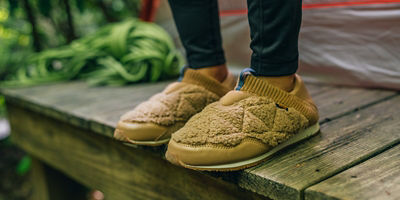
Technical rain gear is your backcountry suit of armor: No matter how rainy, snowy, sleety, or windy it gets outside, the right waterproof jacket (and pants and footwear, too, in the worst weather) will keep you dry. A lightweight rain jacket should be in your pack for any hike, for easy insurance. For any high-stakes activity, however, from winter excursions to multi-day treks to high-altitude missions, the right rain gear is downright essential. In the backcountry, wet clothes and wet boots can be uncomfortable at best and dangerous at worst.
Technical rain jackets (also called shells) are the ones suitable for just those types of trips—think hiking, backpacking, mountaineering, skiing, and climbing. There are scores of them on the market, using an alphabet soup of various technologies designed to be both waterproof and breathable. What they all aim to do: keep precipitation out while still allowing sweat vapor to escape, preventing you from getting wet from the inside. But what works for a 14er bid isn’t necessarily the best bet for hiking the Appalachian Trail. Here’s how to sort through the options.
In this article, you’ll learn:
- The technology behind different waterproof/breathable membranes
- The difference between 2-, 2.5-, and 3-layer jackets
- How to evaluate face fabrics for strength, stretch, and eco-friendliness
- What waterproof ratings mean
- How to compare different features
- How to keep your feet dry
How Membranes Keep You Dry
There are several ways to add water resistance or waterproofness to a shell, but when it comes to technical gear, the best choice is a waterproof/breathable membrane. These delicate, ultrathin films contain countless minuscule pores—too small to allow water to pass through, but large enough to let body heat escape. That’s important because you can keep the rain out but still get wet from sweat on the inside, and that will make you cold. These waterproof/breathable membranes are bonded to a face fabric (the outside of the jacket) for protection and durability, forming a layered material called a laminate. There are quite a few different membranes out there.
The oldest and most recognizable is Gore-Tex, made from expanded polytetrafluoroethylene (ePTFE) and polyurethane that lets water vapor from sweat diffuse through. Other brands offer air-permeable membranes, which allow air (but not water) to pass through from both the outside and inside, which is meant to increase breathability (NeoShell, eVent, The North Face’s Futurelight, Outdoor Research’s AscentShell). Yet another choice is a polyurethane (PU) membrane, which is hydrophilic (water loving) and therefore pulls moisture away from your skin. And two technologies—Columbia’s OutDry and Gore-Tex’s Shakedry—dispense with the face fabric and place the membrane itself on the outside of the jacket.
So which one is best? It depends: Any reputable waterproof/breathable membrane will keep water out. Breathability is the big X factor, and it depends a lot on other design choices in a particular garment, such as face fabric, fit, and pocket placement. And don’t forget: The one membrane that can completely keep up with body heat production at peak exertion has yet to be invented—in the worst conditions, if you’re working hard you might feel swampy in even the most breathable fabrics available. In that case, your best bet is to slow down—moderate your effort to reduce sweating.
Why Layers Matter
When you’re reading the fine print on a rain shell, you’ll see a stat that reports the jacket’s number of layers. One of them is always the face fabric, and one is the membrane; where jackets differ is on the interior layer. Here’s what the three choices mean.
2-layer
This construction has a face fabric and a membrane, plus a mesh liner to protect the membrane. It’s the most affordable option, but typically not used in technical shells.
3-layer
This option pairs the face fabric and membrane to an interior liner, which shields the membrane from abrasion and skin oils. Three-layer jackets are the most durable and often the most breathable—and the most expensive.
2.5-layer
This “in-between” construction has a face fabric, membrane (or coating), and a raised pattern (the “half-layer”) on the interior to protect the membrane. These fabrics tend to be lightweight, but they’re less durable and often less breathable than 3-layer membranes.













